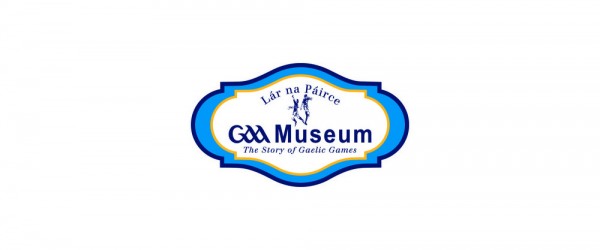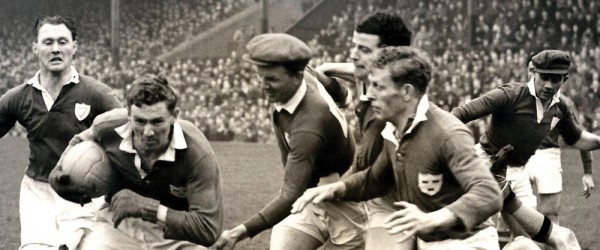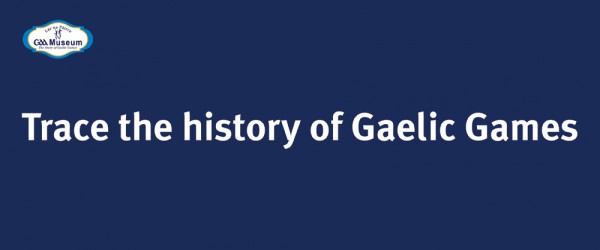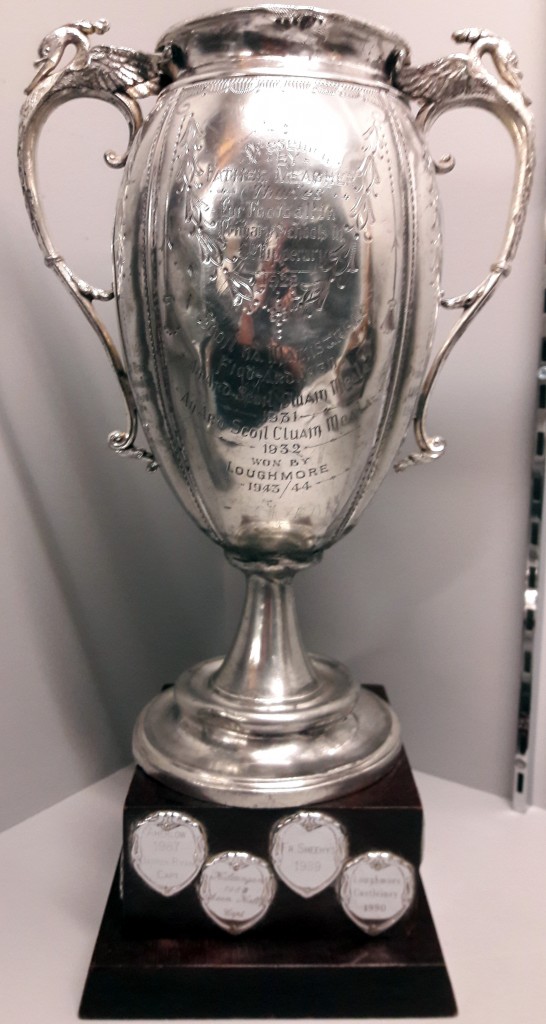This cup is more commonly known as the Rev. J. J. Meagher Cup even though it is inscribed as the ‘Father Meagher, Thurles’ cup. It was presented by him for football in primary schools in County Tipperary in 1928, when the priest was chairman of the Tipperary county board.
It was described at the time as a ‘silver cup’, but is, in fact, a pewter cup, which is a metal alloy, close to ninety percent tin, mixed with copper, antimony, bismuth, and sometimes silver. The suggestion is that the amount of the latter is tiny.
The cup was presented for competition among primary school boys, who were under fifteen years of age on January 1, 1929. It was won in the first year by Ballyneale, Kilsheelan and Newtown, Stars of the Sea team, who defeated Thurles by 3-2 to 2-0 in the final.
The winning team was made up of boys from three schools in the parishes of Grangemockler-Ballyneale, Kilsheelan-Kilcash and Carrick-on-Suir because the organising committee allowed amalgamations of two or more schools for the competition, provided that the total average of boys in the united schools didn’t exceed 100 boys.
After the game, which was played at Thurles, the cup was presented to the winning captain, William Kiely, by Fr. Meagher, and Rev. W. Ryan, P.P., Killenaule presented the team with a set of medals.
The cup later became the trophy for the county under-14 football championship and continued to be presented until 2010, when it was de-commissioned by the county Bord na nÓg and presented to Lár na Páirce.
By this stage it was in a fairly dilapidated condition, with many indentations on the surface, partly out of shape and showing signs that the base had to be soldered to the body at some stage. The handles, in the shape of swans, were intact.
Probably the greatest damage done to the cup was in the crude attempts to carve the names of winners on it. There was no proper timber base where medallions with the names of the winning teams could be attached. Instead, the first winners carved the name ‘Ballyneale and Kilsheelan – Stars of the Sea 1929; under the inscription bearing the name of the cup.. It was done reasonably well but it should never have been allowed.
The organising committee were responsible for this. One of the rules drawn up by the committee on the running of the competition stated that ‘The committee shall have the name of the winning team engraved on the trophy each year.’ In practice it appears that the winning team got the engraving done as the irregularity of the inscriptions would seem to testify
The names of succeeding winners were carved in all kinds of manner without any regularity, very similar to the names carved on the trunk of a tree or graffiti on bus stops. The result has been the vandalisation of the cup.
At some stage a proper timber base was added with spaces for the names of winners to be added, but it was too little, too late and adds to the sad state of a trophy that was presented with great expectation for primary school football ninety years ago this year.
Lár na Páirce
Museum of the GAA and Gaelic Games





